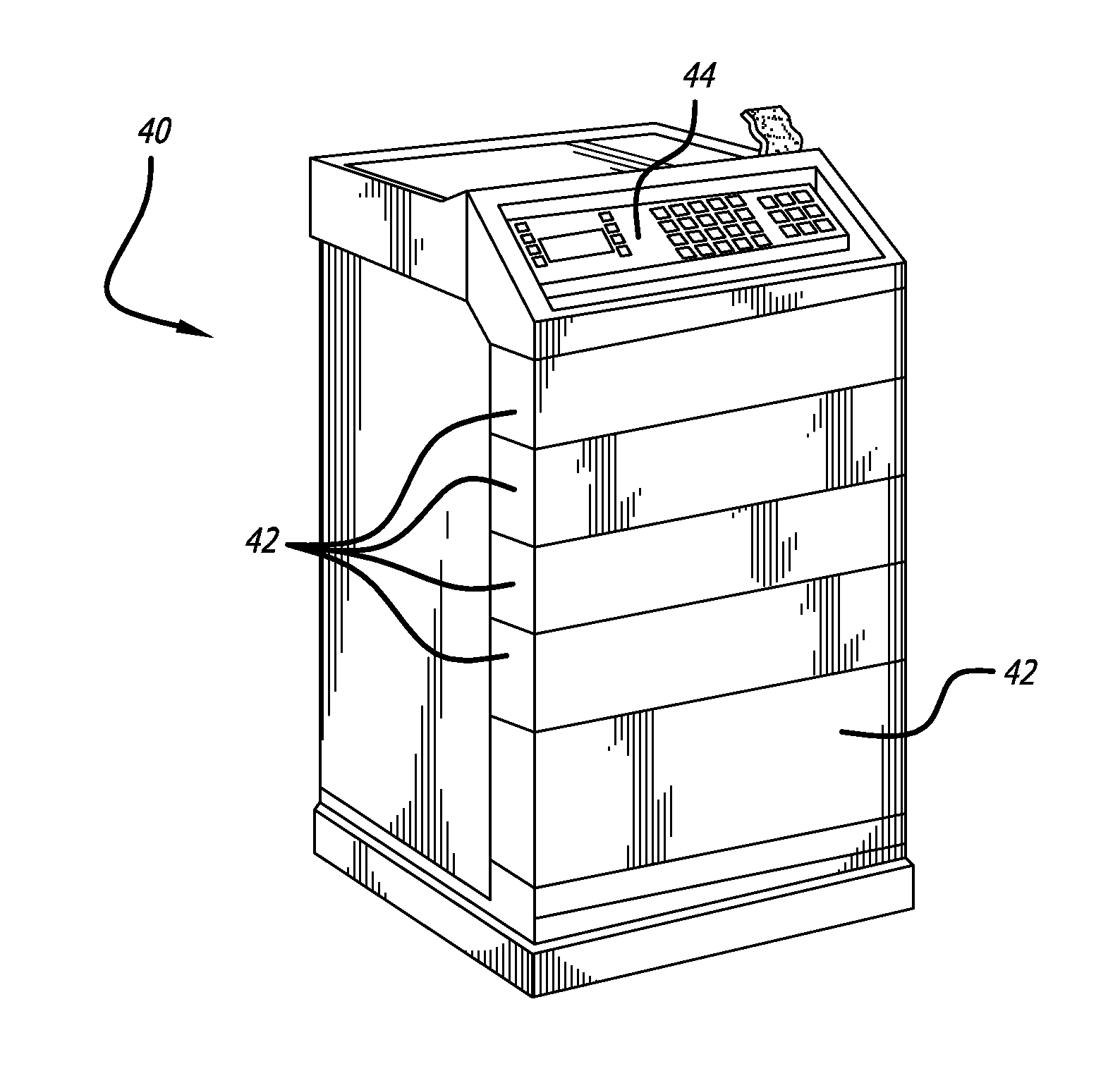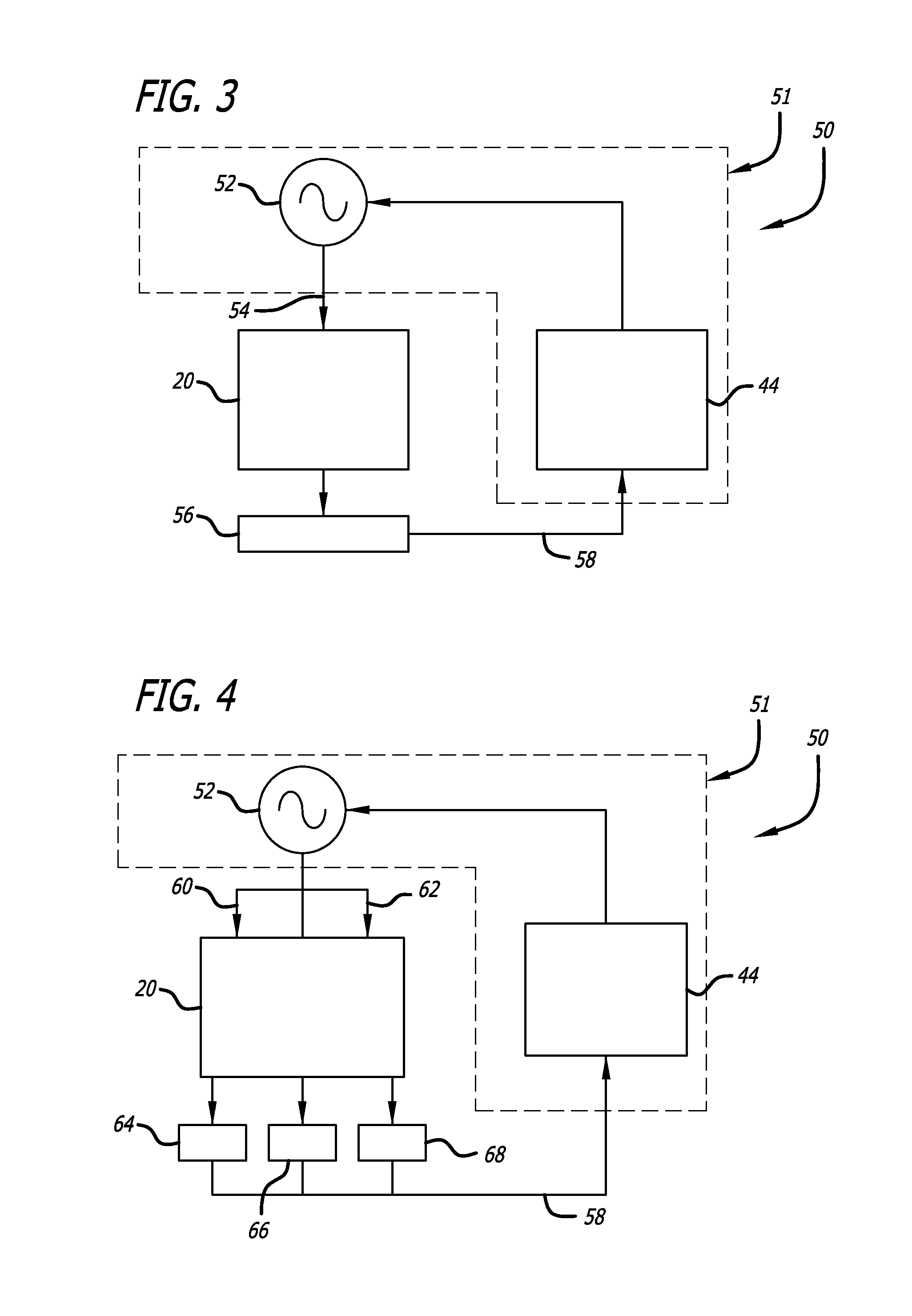These tags are very low cost and are produced in enormous quantities.
Programming each one of the tags with information contained in the article to which they are attached involves further expense.
Another choice is an active RFID tag; however, such tags require an accompanying battery to provide power to activate the tag, thus increasing the expense of the tag and making them undesirable for use in a large number of applications.
Additionally, in the U.S. and in other countries, the frequency range within which such tags are permitted to operate is limited.
At this frequency range, the electromagnetic energy is less affected by liquids and other
dielectric materials, but suffers from the limitation of a short interrogating distance.
Additionally,
metal surfaces of the enclosures present a serious obstacle for the RF signals that need to be exchanged between RFID readers and RFID tags, making RFID tags located behind those
metal surfaces difficult or impossible to detect.
In addition to the above, the detection range of the RFID systems is typically limited by
signal strength to short ranges, frequently less than about thirty centimeters for 13.56 MHz systems.
However, such an antenna may be unwieldy and may increase the range of the radiated power beyond allowable limits.
Furthermore, these reader antennae are often located in stores or other locations where space is at a premium and it is expensive and inconvenient to use such large reader antennae.
In another possible solution, multiple small antennae may be used but such a configuration may be awkward to set up when space is at a premium and when wiring is preferred or required to be hidden.
Cabinets such as these are typically made of
metal, which can make the use of an external RFID system for identification of the stored articles difficult.
In some cases, such cabinets are locked due to the presence of narcotics or other medical articles or apparatus within them that are subject to a high theft rate.
Thus, manual identification of the cabinet contents is difficult due to the need to control access.
Providing an internal RFID system in such a cabinet can
pose challenges.
In general, dead zones are areas in which the level of
coupling between an RFID reader antenna and an RFID tag is not adequate for the system to perform a successful read of the tag.
Thus, articles placed in dead zones may not be detected thereby resulting in inaccurate tracking of tagged articles.
Often in the medical field, there is a need to read a large number of tags attached to articles in such an enclosure, and as mentioned above, such enclosures have
limited access due to security reasons.
Generating such a robust EM energy field is not an easy task.
However, in the RFID field the
usable frequencies of operation are strictly controlled and are limited.
Where the enclosure impedance changes due to the introduction or removal of articles to or from the enclosure, a static
impedance matching circuit may not provide optimum
energy transfer into the enclosure.
If the
energy transfer and resulting
RF field intensity within the enclosure were to fall below a threshold level, some or many of the tags on articles within the enclosure would not be activated to identify themselves, leaving an ineffective
inventory system.
The use of high-power readers to locate and extract data from RFID tags is generally undesirable in health care facilities, although it may be acceptable in warehouses that are sparsely populated with workers, or in aircraft cargo holds.
Radiating a broad beam of EM energy at a large area, where that EM energy may stray into adjacent, more sensitive areas, is undesirable.
Additionally, this is a manual system that will require the services of one or more individuals, which can also be undesirable in facilities where staff is limited.
This takes a significant amount of time to accomplish correctly.
Such examination and restocking can take significant amounts of time and if a
pharmacist is required to perform some of the inventory process, that
pharmacist will be unavailable to perform other duties.
In such a manual procedure, mistakes can be made.
As mentioned, such processes are typically performed manually at a significant cost in time.
Missing key medical articles in a tray could be devastating in an emergency situation.
Unfortunately, the above procedures tend to suffer from significant shortcomings.
For instance, manual inspections can result in errors as can resupply.
Creating records of what was done is also generally
time consuming and error prone, all of which drive up the cost of creating and resupplying the carts and trays.
Furthermore, under the current system, the
pharmacy is unable to create individualized carts for patients.
 Login to View More
Login to View More  Login to View More
Login to View More 


